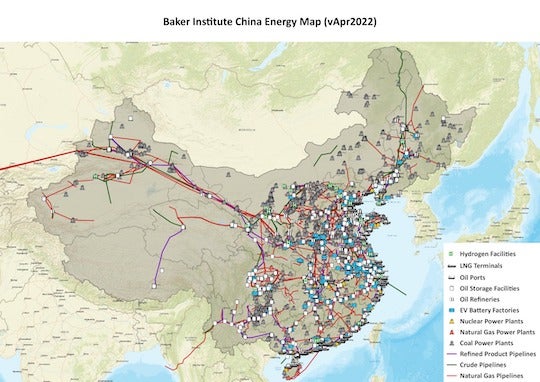Rice University's Baker Institute for Public Policy has released its latest China Energy Map, an open-source, interactive chart of the country's energy infrastructure.
The China Energy Map provides a comprehensive visualization of the nation's full energy system, featuring not only oil and gas infrastructure but also coal and nuclear power plants and electric vehicle battery factories. The 2022 update includes four new layers: natural gas pipelines, liquid natural gas (LNG) terminals, natural gas power plants and hydrogen plants.
 The map was created by Shih Yu (Elsie) Hung, a research manager at the Baker Institute Center for Energy Studies, Gabriel Collins, the Baker Botts Fellow in Energy and Environmental Regulatory Affairs, and Michelle Michot Foss, fellow in energy and materials.
The map was created by Shih Yu (Elsie) Hung, a research manager at the Baker Institute Center for Energy Studies, Gabriel Collins, the Baker Botts Fellow in Energy and Environmental Regulatory Affairs, and Michelle Michot Foss, fellow in energy and materials.
The map, first released in February 2019 as the China Oil Map, tracks nearly 5,200 energy facilities in China, serving as a data resource for both academia and the general public, Hung said. As it continues to evolve, the team plans to add layers such as electric vehicle manufacturing sites, battery mineral mines and more natural gas infrastructure such as storage sites and processing plants.
To access the map, click here. For the data and methodology, click here.






